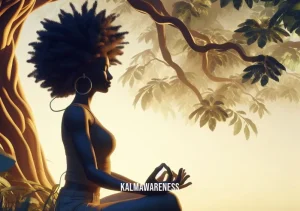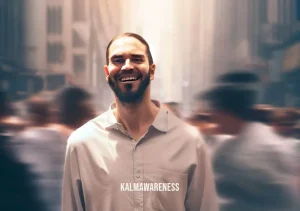Basic Yoga for Dummies: A Comprehensive Guide
Embarking on a journey into yoga can feel overwhelming at first. With all the intricate postures, breathing techniques, and yoga jargon, where do you even start? But, as intimidating as it may seem, anyone can practice yoga. And that includes you. That’s why we’ve put together this basic yoga for dummies guide to help you kickstart your yoga journey.
Understanding the Fundamentals
Yoga is more than just a physical exercise; it’s a holistic practice that nurtures your mind, body, and spirit. But before you begin, it’s essential to understand the yoga fundamentals.
From asanas (postures) to pranayama (breathing techniques) and dharana (concentration), yoga encompasses several components. Each of these elements plays a crucial role in ensuring a holistic practice. If you’d like to delve deeper into these fundamentals, our article on yoga fundamentals provides an in-depth explanation.
Embarking on the Yoga Journey: First Steps
Starting with yoga might seem daunting, but it doesn’t have to be. One of the best ways to get started is by learning and practicing a few basic postures. Some poses you can begin with include the fetal pose, right-hand poses, and sit poses. They’re perfect for beginners since they’re straightforward and offer numerous benefits.
- The fetal pose can help to relieve stress and anxiety.
- Right-hand poses are excellent for enhancing arm and hand strength.
- Sit poses can improve your focus, body alignment, and flexibility.
Remember, it’s not about how well you can perform a pose but how you feel when doing it. As a beginner, focus more on feeling comfortable and less on attaining the perfect posture. As you practice more, your body will gradually become more flexible, allowing you to perform more complex postures.
Importance of Breathwork in Yoga
In yoga, breathwork is as important as physical movement. It’s the connecting thread between the mind and body, and it helps to deepen your practice. One technique you can start with is Breathe Together Yoga, which encourages collective deep breathing to boost relaxation and enhance your connection with those around you.
The Role of Mindfulness
Yoga isn’t just about postures; it’s a practice that encourages mindfulness and presence. Each movement is a moment to connect with yourself and the present. As you engage in yoga, try to maintain a sense of mindful movement. This awareness helps in developing a deeper mind-body connection.
We invite you to continue with the next part of this article, where we’ll delve into some essential tips for your hands in yoga, a yoga sequence that aids in improving the flow of energy within your body, and how yoga goes beyond the poses. You’ll also get to understand the significance of aligning your body correctly while performing yoga poses. So, stay with us on this exciting journey of basic yoga for dummies.
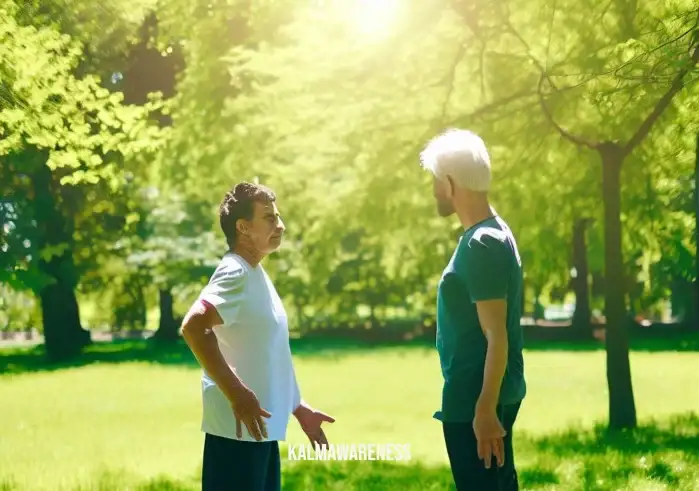
Unveiling Yoga’s Mystique
So, you’ve started understanding the foundational blocks of yoga. The basic yoga for dummies journey is now leading you to discover how yoga goes beyond mere poses and dives into your life, transforming it for the better. This chapter will guide you on maintaining proper hand alignment, learning a beneficial yoga sequence, and expanding your comprehension of how yoga is much more than just poses.
Essential Tips for Your Hands in Yoga
The hands play a pivotal role in yoga. They help provide support, maintain balance, and facilitate the flow of energy during the practice. Let’s explore three crucial tips for ensuring the correct placement and use of your hands in yoga.
- Distribute Your Weight Evenly: While performing poses that require hand support like Downward Dog or Crow pose, ensure your weight is evenly distributed across your palms and fingers to prevent wrist strain. Read our article on yoga tips for the hands for more detailed guidance.
- Keep Your Fingers Spread Wide: To improve balance and stability, spread your fingers wide on the mat. This action provides a broader base of support, reducing the risk of toppling over during challenging poses.
- Maintain a Neutral Wrist Position: Whenever possible, aim to keep your wrists neutral, i.e., not bent too much in one direction. This precaution helps prevent wrist injuries.
Mastering a Beneficial Yoga Sequence
A yoga sequence refers to the order of yoga poses performed one after another. Designing an effective yoga sequence is a skill that comes with practice and understanding of the body’s energy flow. Our article on designing transformative yoga classes offers in-depth insights into this.
Consider the following sequence as a beginner:
- Start with a few minutes of mindful breathing to center your mind and prepare your body.
- Proceed with some gentle warm-up exercises.
- Perform the main sequence of yoga poses. Begin with simpler poses and gradually move to more challenging ones.
- Wind down with some cooling poses and stretches.
- End with Savasana or Corpse Pose, a posture of total relaxation. Our article on Final Savasana explains this pose’s significance in detail.
Yoga: Beyond the Poses
Yoga transcends physical postures; it’s a lifestyle that embodies a philosophy of living with awareness, harmony, and integrity. It helps cultivate mindfulness, encourages self-care, and promotes an overall sense of wellbeing. For a more comprehensive understanding, our article on Teaching Yoga Beyond the Poses dives deep into this concept.
Here’s a table illustrating how yoga transcends beyond physical postures:
| Physical Poses (Asanas) | Beyond the Poses |
|---|---|
| Improve flexibility and strength | Cultivate mindfulness and presence |
| Promote better posture and alignment | Encourage a balanced lifestyle |
| Enhance body awareness | Nurture self-awareness and introspection |
| Aid in physical health | Contribute to mental and emotional wellbeing |
This chapter is part of the complete guide to basic yoga for dummies, and it provides insights into more advanced aspects of yoga practice. As we move forward, we’ll discover the art of mindful movements, understand how yoga can assist in relaxation and stress relief, and unravel the deep connection between yoga and meditation. So, stay tuned for an exciting journey into the profound world of yoga.

Yoga and Mindful Movements
In our basic yoga for dummies guide, we’ve touched on the philosophy and physical aspects of yoga. Now let’s delve into an important dimension of yoga – mindfulness. Mindfulness refers to the quality of being present and fully engaged with the task at hand, without being overwhelmed by external factors. Incorporating mindfulness into your yoga practice can enhance the benefits manifold. Let’s explore this further.
Yoga as a Path to Mindfulness
Yoga, in essence, is a path that leads to mindfulness. It invites you to tune into your breath, focus on your body, and bring your mind to the present moment. As the famous yoga guru, B.K.S Iyengar said, “Yoga is a light, which once lit, will never dim. The better your practice, the brighter the flame.” Our post on Yoga and Mindfulness Therapy can offer further enlightenment on this topic.
Mindful Movements in Yoga
The concept of mindful movements is an essential part of yoga. It refers to the practice of moving your body with full awareness of every motion you make. A wise yogi once said, “Yoga is not about touching your toes, it’s about what you learn on the way down.”
Consider the following tips for incorporating mindful movements into your yoga practice:
- Pay Attention to Your Breath: Your breath is the anchor that keeps you grounded in the present moment. Use it as a tool to sync your movements and still your mind. Learn more about this connection in our Breathe Together Yoga article.
- Move Slowly and Deliberately: Take your time with each pose. Feel every muscle stretch, notice your alignment, and observe how your body feels at every step.
- Listen to Your Body: Tune into your body’s signals. Push your limits, but avoid straining yourself. Remember, yoga is not a competition. It’s a journey of self-discovery.
Our Mindful Movements article dives deeper into these practices.
Mindfulness Off the Mat
Taking mindfulness off the mat and integrating it into your daily life is the real challenge and reward of yoga. Remember the words of the great sage Patanjali, “Yoga is the settling of the mind into silence. When the mind has settled, we are established in our essential nature, which is unbounded Consciousness.”
Here are some ways to bring mindfulness into your daily life:
- Practice Mindful Eating: Pay attention to the taste, texture, and smell of your food. Eat slowly and savor each bite.
- Be Present in Your Interactions: When conversing with someone, give them your undivided attention. Avoid multitasking.
- Perform Daily Tasks Mindfully: Whether it’s brushing your teeth, doing the dishes, or driving to work, be fully present in the task.
- Take Mindful Breaks: Pause at regular intervals throughout your day to breathe deeply and check in with yourself.
Our article on Mindful Living Centers El Paso explores this topic in more detail.
This chapter has deepened your understanding of the importance of mindfulness in the journey of basic yoga for dummies. In the next chapter, we will explore the powerful tools of yoga for deep relaxation and stress relief. We’ll also look at how yoga can enhance your sleep quality. So, fasten your seat belts for a journey towards tranquillity and serenity.
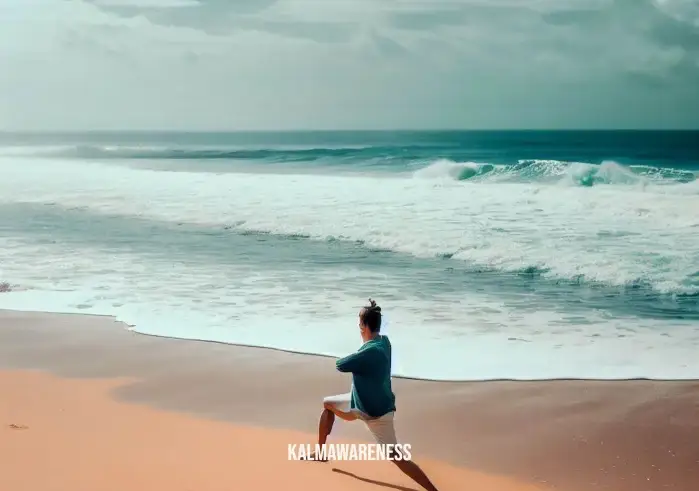
Yoga for Relaxation and Better Sleep
In this section of our guide, “Basic Yoga for Dummies,” we will explore how yoga can help you relax, relieve stress, and improve your sleep quality. It’s all about harnessing the power of certain asanas, pranayama (breath control), and yoga nidra (yogic sleep) to achieve a calmer mind and a more restful sleep.
Yoga for Relaxation and Stress Relief
Stress is an inevitable part of our lives. However, the practice of yoga can provide us with the tools to manage it effectively. By combining physical postures, breathing exercises, and meditation, yoga helps to calm the mind and relax the body.
Practicing yoga regularly can help reduce the levels of the stress hormone cortisol in the body. The gentle stretching of yoga poses can also help to relieve physical tension. Our guide to Mindful Wellness of Arizona provides some great tips for using yoga as a stress management tool.
Here are some yoga asanas that can help you unwind:
- Child’s Pose (Balasana): This pose allows you to relax and breathe deeply, releasing tension and providing a great sense of calm.
- Cat-Cow Stretch (Marjaryasana-Bitilasana): This pose helps relieve tension in the back, neck, and shoulders, areas where stress often accumulates.
- Corpse Pose (Savasana): Despite its morbid name, Savasana is a deep relaxation pose. Our article on the Final Savasana explains its benefits in more detail.
Remember, practicing yoga is not about performing the perfect pose. It’s about creating harmony and balance within yourself. As the famous yoga teacher Aadil Palkhivala said, “Yoga is a dance between control and surrender.”
Yoga for Better Sleep
Many of us struggle with getting a good night’s sleep. Whether it’s because of stress, anxiety, or an overactive mind, a restless night can leave us feeling groggy and unproductive the next day. But, don’t worry! Yoga can be a natural sleep remedy.
Yoga, with its focus on relaxation and mindfulness, can help to calm the mind and prepare the body for sleep. Particularly, Yoga Nidra, or “yogic sleep,” is a state of consciousness between waking and sleeping that is particularly conducive to deep relaxation and restful sleep. Our article on Deep Sleep Yoga Nidra explores this profound practice further.
Practicing gentle yoga sequences before bed can also aid in better sleep. Our resource on Yoga for Night offers some great routines you can try out.
In conclusion, the practice of yoga can be a powerful tool to combat stress and promote better sleep. In the following chapter of our Basic Yoga for Dummies guide, we will delve into the exciting world of yoga props and how they can enhance your practice. So, join us as we unravel the mysteries of blocks, straps, bolsters, and more!
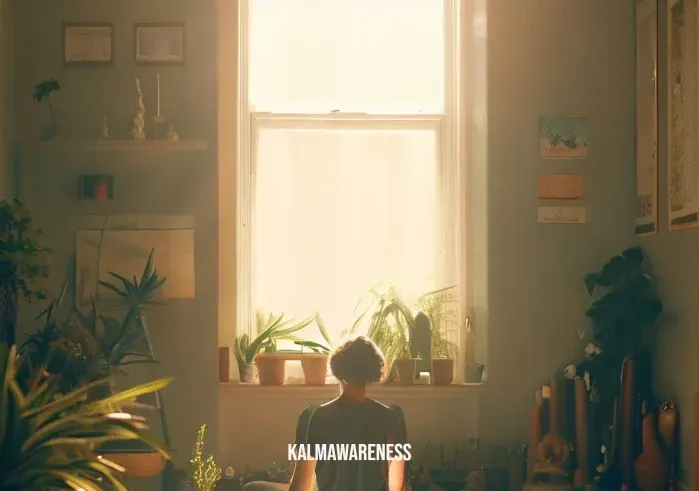
Enhancing Your Practice with Yoga Props
Welcome back to our guide “Basic Yoga for Dummies.” In this chapter, we will discuss how yoga props can enhance your practice. From providing extra support and stability to helping with alignment, yoga props are a fantastic tool to deepen your practice.
Swami Sivananda once said, “An ounce of practice is worth tons of theory.” Let’s put this into action by exploring the various yoga props and their uses.
Yoga Props: Aiding Your Practice
Yoga props are not just for beginners; they can be beneficial for yogis of all levels. Whether you’re looking to deepen a stretch, maintain alignment, or simply want a little extra support, props can be incredibly helpful. In our Yoga Direct Yoga Mat article, we delve into one of the most essential yoga props.
Here are some other yoga props you may find useful:
- Yoga Blocks: These can help provide support and extend your reach in poses that may be challenging for your flexibility level.
- Yoga Straps: If you’re struggling to reach your toes in forward bends or need some help in leg stretches, a yoga strap can be your best friend.
- Yoga Bolsters: These are great for restorative poses, helping to provide support, open the chest, or lift the hips.
- Yoga Wheels: This prop can help enhance your flexibility, balance, and strength. It’s particularly useful in backbends.
| Yoga Prop | Use |
|---|---|
| Yoga Blocks | Provide support and extend reach |
| Yoga Straps | Assist in leg stretches and forward bends |
| Yoga Bolsters | Provide support in restorative poses |
| Yoga Wheels | Enhance flexibility, balance, and strength |
Embracing Progress, Not Perfection
Remember, the journey of yoga is not about perfection but progress. Every small step you take in deepening your practice counts. The famed yoga teacher B.K.S. Iyengar once said, “Yoga does not just change the way we see things, it transforms the person who sees.” So, embrace the journey and allow yourself to grow.
Using yoga props doesn’t mean you’re less advanced; it shows that you’re mindful and respectful of your body’s limits. It’s all about finding balance and working in harmony with your body. Our article on Mindful Movements can help you understand this concept further.
In conclusion, yoga props can be an excellent tool for deepening your yoga practice, regardless of your skill level. They help enhance flexibility, improve balance, and provide the necessary support to maintain alignment in various poses.
In our final chapter of “Basic Yoga for Dummies,” we will explore the exciting world of yoga variations and styles. Learn about the difference between Hatha, Vinyasa, Yin, and more! The journey continues, and the mat awaits!
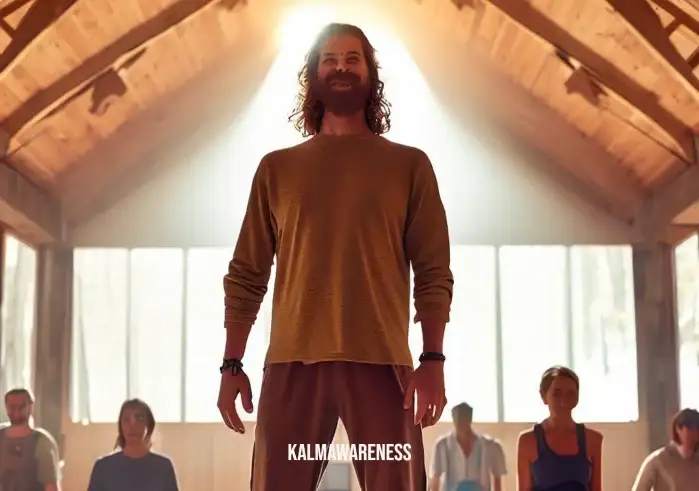
Dive Into the Varieties of Yoga Styles
Welcome back to our “Basic Yoga for Dummies” guide. We’ve covered the fundamentals, yoga props, alignment, and more. Now, it’s time to explore the exciting world of yoga styles. You might be surprised to find out that yoga isn’t just ‘one size fits all.’ There are numerous styles, each with its unique flair and benefits.
Rumi, a 13th-century Persian poet, once said, “The body is not hidden from the soul, nor the soul from the body, and yet the soul is not for everyone to see.” Yoga helps to bridge the gap between body and soul, and different styles can facilitate this connection in diverse ways.
Yoga Styles for Everyone
Here’s an overview of some popular yoga styles and what you can expect from each. If you’re interested in exploring more about each style, our articles on Mindful Moving and Mindful Flow offer deeper insights.
Hatha Yoga
In Sanskrit, ‘Hatha’ means ‘force.’ Hatha yoga is a general term for most yoga styles that combine asanas (postures) with pranayama (breathing exercises). It’s perfect for beginners since the pace is usually slower compared to other styles.
Vinyasa Yoga
Derived from Hatha Yoga, Vinyasa is more dynamic and includes a continuous flow of postures linked with breath. Think of it as a dance, where each movement syncs with your breath.
Ashtanga Yoga
This style is more demanding and follows a specific sequence of postures. It’s excellent for building strength and stamina but might be challenging for beginners.
Yin Yoga
Yin yoga involves holding poses for longer periods (from a minute up to five minutes). It helps to stretch the connective tissues and promotes flexibility.
Restorative Yoga
Restorative Yoga is all about relaxation and rejuvenation. Props are used to support the body, allowing you to completely surrender and rest.
Choosing the Right Style for You
Your perfect yoga style will depend on your personal goals, fitness level, and preference. You might be drawn to the calming and restorative benefits of Yin Yoga, or maybe the dynamic flow of Vinyasa lights your fire. Perhaps, you would enjoy the discipline and structure of Ashtanga Yoga or the relaxing nature of Restorative Yoga. Whatever style you choose, remember that it’s all about connecting with yourself and enjoying the journey. Check out our Mindful Yoga Therapy article for more on finding the right fit.
In conclusion, the world of yoga styles is vast and varied, offering a wealth of options to explore. With “Basic Yoga for Dummies,” we hope to have ignited a spark of curiosity and motivation in you to delve deeper into the practice of yoga.
In our next chapter, we will wrap up with some final thoughts, including how to incorporate yoga into your daily routine. Until then, let your inner yogi shine, and remember, the joy is in the journey, not the destination. See you soon!
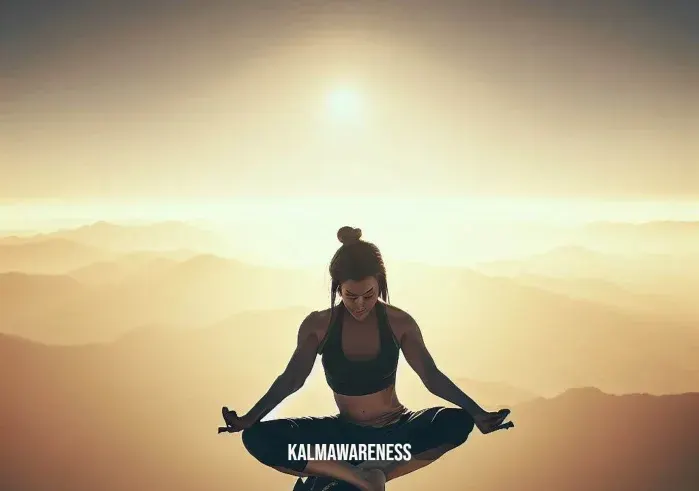
Embark on Your Journey – Integrating Yoga into Your Life
Welcome back to the final chapter of “Basic Yoga for Dummies”. Over our journey together, we’ve explored the essential elements of yoga, from understanding the basic principles, alignment and props, to diving into the variety of yoga styles. It’s now time to talk about how to incorporate yoga into your everyday life.
Yoga is not just a physical exercise; it is a holistic practice that connects the body, mind, and spirit. By practicing yoga regularly, you can reap incredible benefits, such as increased flexibility, improved mental clarity, stress reduction, and overall wellness. But how do we bring this ancient practice into our modern lives?
Making Yoga a Daily Practice
Creating a consistent yoga routine can be challenging, especially when life gets busy. However, it’s not about perfection but persistence. To start, aim to practice for at least 15 minutes a day. Over time, you can gradually increase this duration.
Consider setting up a dedicated yoga space in your home, a sanctuary where you can practice without interruption. Having a specific area dedicated to your practice can help to cultivate consistency and commitment. Find inspiration for your space from our Mindful Studio NYC article.
The Power of Mindfulness
Mindfulness is another fundamental aspect of yoga that you can incorporate into your daily routine. It refers to the practice of being fully present in the moment. You can practice mindfulness during your yoga sessions and even outside them, whether you’re eating, working, or simply going for a walk. You can find more about the concept and practice of mindfulness in our Movement Mindfulness and Me article.
Explore, Enjoy, and Evolve
Remember, yoga is a personal journey of exploration, joy, and evolution. There’s no one-size-fits-all approach, and it’s crucial to listen to your body and respect its limits. Explore different yoga styles, instructors, and techniques until you find what resonates with you.
In the end, yoga is more than a physical practice; it is a way of life. It invites us to be present, to breathe, to move, and ultimately, to connect with our inner self. As we wrap up this “Basic Yoga for Dummies” guide, our hope is that you feel inspired and equipped to embark on your own yoga journey.
Remember, as the renowned yoga teacher B.K.S. Iyengar said, “Yoga does not just change the way we see things, it transforms the person who sees.” Let your transformation begin!
Thank you for being part of this journey. We hope you continue to explore the world of yoga with us. Visit our Yoga and Mindfulness Therapy section for more inspiration and knowledge. Remember, the path to self-discovery has just begun. Until we meet again, Namaste!




